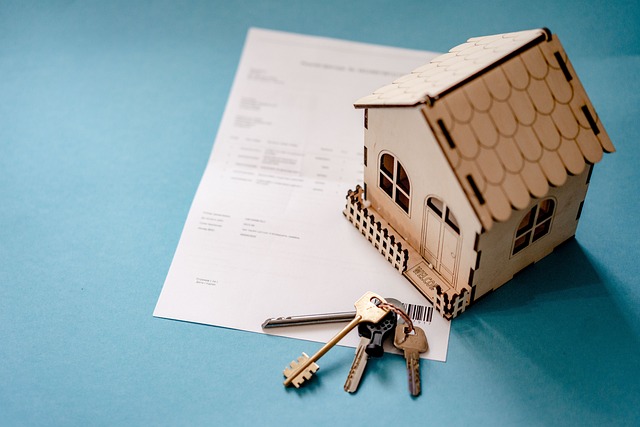Managing real estate properties effectively requires a comprehensive approach that combines strategic planning, organizational efficiency, and attention to detail. Whether overseeing residential, commercial, or mixed-use properties, real estate managers must balance the needs of tenants, property owners, and operational goals. Effective management ensures that properties remain profitable, well-maintained, and compliant with regulations. This article explores key management considerations for real estate management, with expert insights from Hirsh Mohindra, a renowned real estate strategist and advisor.
1. Establishing Clear Operational Goals
Successful real estate management starts with clear and measurable goals. These goals should align with the property owner’s objectives, whether that means maximizing rental income, increasing property value, or minimizing vacancy rates. Setting operational benchmarks provides a roadmap for success and ensures that all stakeholders are aligned.
“Clear goals are the foundation of effective property management,” says Hirsh Mohindra. “They provide direction and help managers prioritize tasks that align with long-term objectives.”
By regularly reviewing these goals, managers can adjust their strategies to reflect changing market conditions or owner expectations.
2. Building Strong Tenant Relationships
Tenant satisfaction is a cornerstone of successful property management. Real estate managers must prioritize open communication, timely responses to concerns, and consistent delivery of high-quality services. Building trust and maintaining positive relationships with tenants can significantly reduce turnover and enhance occupancy rates.
“Tenants are more than just clients—they’re partners in the success of your property,” emphasizes Hirsh Mohindra. “Investing in their satisfaction creates a stable and thriving community, which benefits both tenants and property owners.”
Proactive engagement, such as conducting tenant surveys and hosting community events, fosters goodwill and strengthens tenant loyalty.
3. Implementing Effective Financial Management
Financial oversight is a critical aspect of real estate management. Managers must create and adhere to budgets, track expenses, and optimize rental income to ensure profitability. This includes managing operating expenses, preparing for capital improvements, and maintaining reserve funds for unexpected costs.
“Real estate management is as much about financial stewardship as it is about property oversight,” notes Hirsh Mohindra. “Strong financial management ensures that properties remain sustainable and profitable over the long term.”
Leveraging property management software can simplify financial tracking, provide real-time insights, and streamline reporting for stakeholders.
4. Developing a Skilled Team
Real estate management often involves coordinating a diverse team of professionals, including maintenance staff, leasing agents, and administrative personnel. Building a skilled and motivated team is essential for delivering exceptional service and achieving operational goals.
Managers should prioritize hiring individuals with the right skills and experience, as well as providing ongoing training and professional development opportunities.
“Your team is the backbone of your management operations,” says Hirsh Mohindra. “Empowering them with the tools and knowledge they need leads to better performance and stronger outcomes for the property.”
Clear communication, delegation, and recognition of achievements also contribute to a positive and productive work environment.
Utilizing Technology for Efficiency
Technology has revolutionized the way real estate properties are managed. From automated rent collection systems to digital lease management platforms, technology can streamline operations, reduce manual tasks, and enhance decision-making.
Real estate managers should evaluate and adopt technologies that align with their needs and improve efficiency. For instance, smart building systems can reduce energy costs, while customer relationship management (CRM) tools can improve tenant communication.
“Technology is no longer optional in real estate management—it’s a necessity,” explains Hirsh Mohindra. “The right tools can save time, reduce errors, and provide valuable data that drives better decisions.”
6. Addressing Legal and Regulatory Compliance
Compliance with local, state, and federal regulations is a fundamental responsibility of real estate managers. This includes adhering to landlord-tenant laws, zoning requirements, and fair housing regulations. Failing to comply can result in fines, legal disputes, and reputational damage.
Managers must stay informed about regulatory changes and work with legal professionals to ensure all practices align with the law.
“Compliance isn’t just about avoiding penalties—it’s about building trust and integrity in your operations,” says Hirsh Mohindra. “A well-managed property is one that operates within the framework of the law.”
7. Proactive Risk Management
Real estate management involves inherent risks, such as property damage, tenant disputes, and liability issues. Proactive risk management is essential for mitigating these challenges and ensuring operational continuity.
Managers should conduct regular property inspections, implement safety protocols, and maintain adequate insurance coverage to protect against potential risks. Creating an emergency response plan for natural disasters or other crises is also crucial.
“Risk management is about anticipating problems before they arise,” advises Hirsh Mohindra. “Being prepared allows you to address issues quickly and minimize their impact.”
8. Enhancing Property Value Through Strategic Investments
Increasing property value is a primary goal of real estate management. This can be achieved through strategic investments in capital improvements, energy efficiency upgrades, and aesthetic enhancements. Managers should work with property owners to identify cost-effective improvements that offer a strong return on investment.
Regularly updating common areas, modernizing facilities, and maintaining curb appeal can attract higher-paying tenants and increase market competitiveness.
9. Monitoring Market Trends and Adapting Strategies
The real estate market is dynamic, influenced by factors such as economic conditions, demographic shifts, and technological advancements. Effective property managers stay informed about market trends and adapt their strategies to remain competitive.
This includes adjusting rental rates based on market demand, targeting emerging tenant demographics, and exploring opportunities for property diversification or expansion.
“Adaptability is key in real estate management,” says Hirsh Mohindra. “Managers who stay ahead of trends and embrace change position their properties for long-term success.”
Conclusion
Effective real estate management requires a combination of strategic planning, operational excellence, and a commitment to tenant satisfaction. By focusing on clear goals, financial oversight, technology integration, and proactive risk management, real estate managers can create sustainable and profitable operations.
As Hirsh Mohindra aptly puts it, “Great management is about balance—meeting the needs of today while preparing for the challenges of tomorrow. Real estate managers who master this balance drive success for their properties and their stakeholders.”
By addressing these management considerations, real estate professionals can ensure that their properties thrive in an ever-changing industry landscape.









